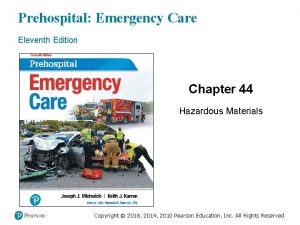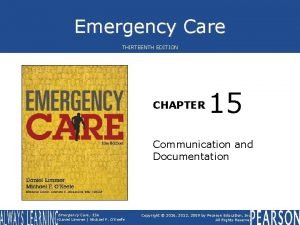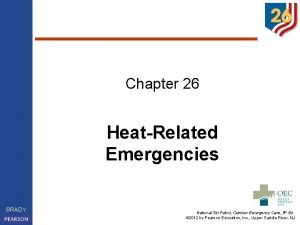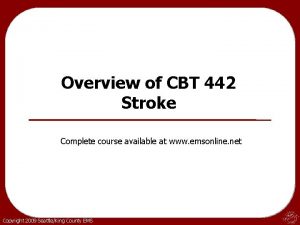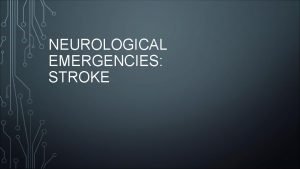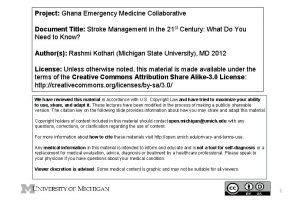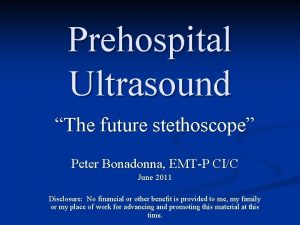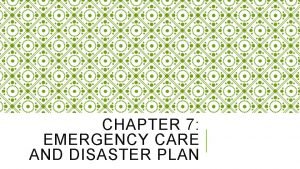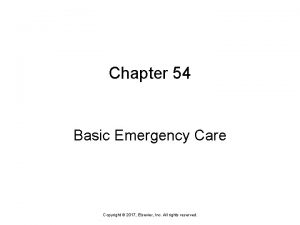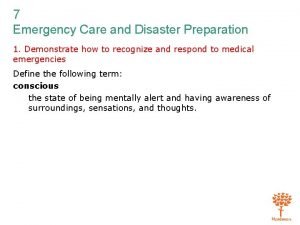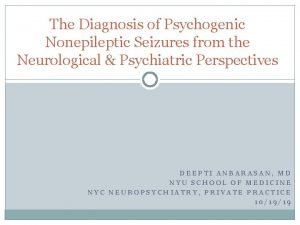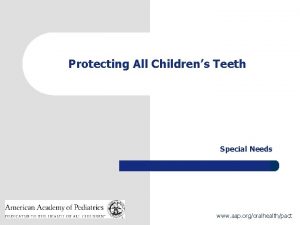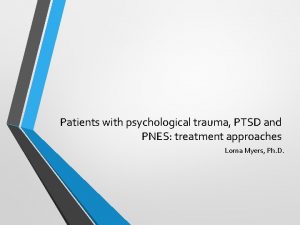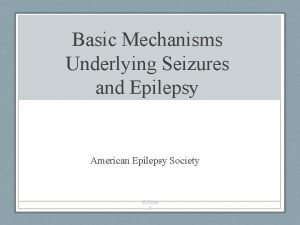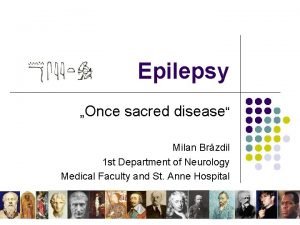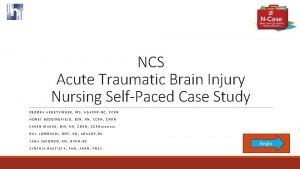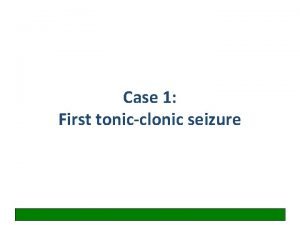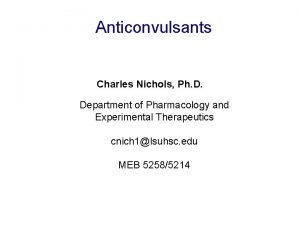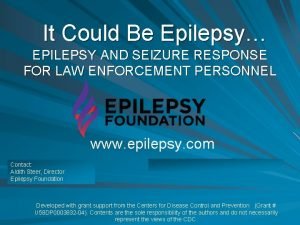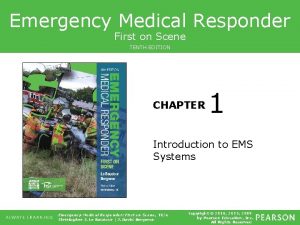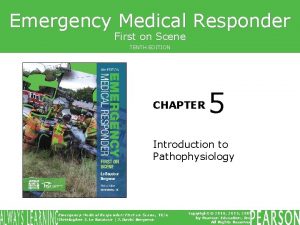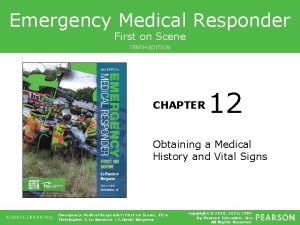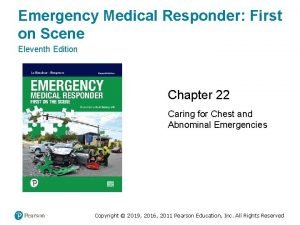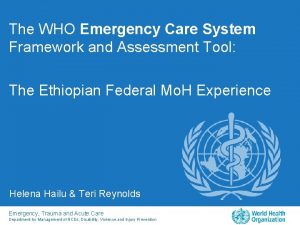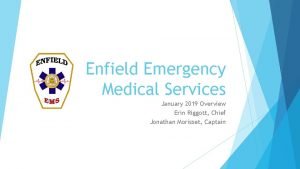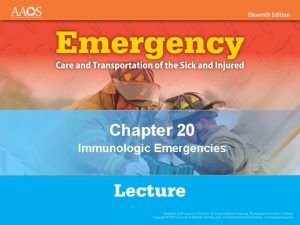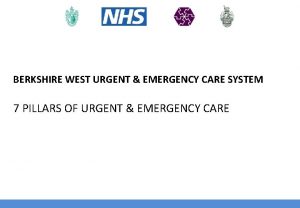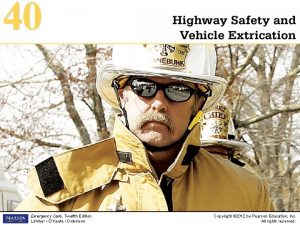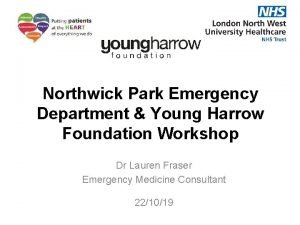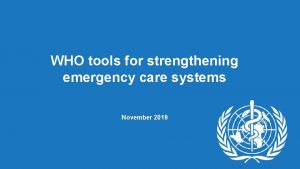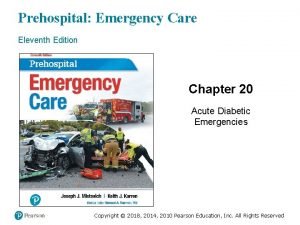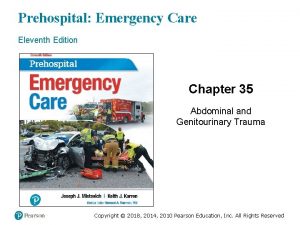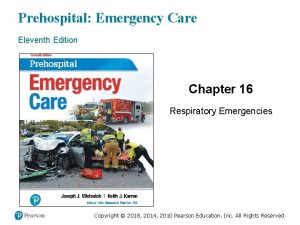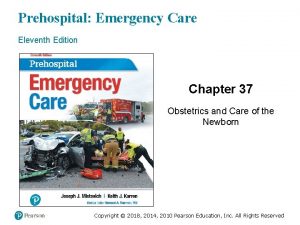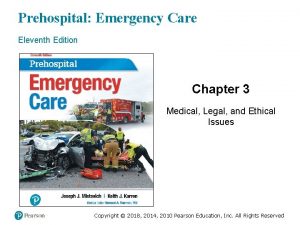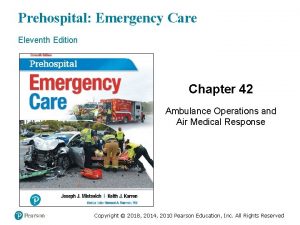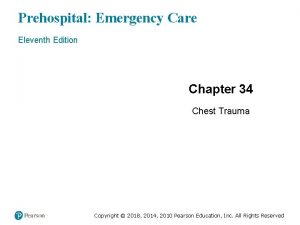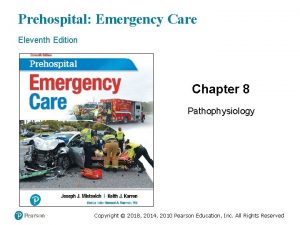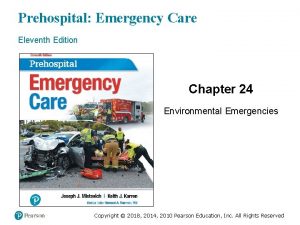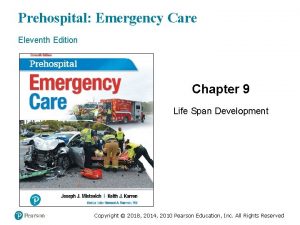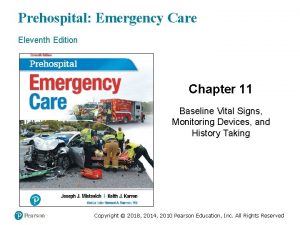Prehospital Emergency Care Eleventh Edition Chapter 19 Seizures























































- Slides: 55

Prehospital: Emergency Care Eleventh Edition Chapter 19 Seizures and Syncope Slides in this presentation contain hyperlinks. JAWS users should be able to get a list of links by using INSERT+F 7 Copyright © 2018, 2014, 2010 Pearson Education, Inc. All Rights Reserved

Learning Readiness • EMS Education Standards, text p. 584. • Chapter Objectives, text p. 584. • Key Terms, text p. 584. • Purpose of lecture presentation versus textbook reading assignments. Copyright © 2018, 2014, 2010 Pearson Education, Inc. All Rights Reserved

Setting the Stage • Overview of Lesson Topics – Seizures – Syncope Copyright © 2018, 2014, 2010 Pearson Education, Inc. All Rights Reserved

Case Study Introduction EMTs Ana Salinas and Loren Dyer enter a residence for a report of a seizure to find a man in his early 30 s who appears unresponsive, and who has increased respirations with copious oral secretions. They can see that the patient was incontinent of urine. The patient’s brother reports that the patient was playing a game of cards when he experienced a seizure, falling out of his chair. Copyright © 2018, 2014, 2010 Pearson Education, Inc. All Rights Reserved

Case Study • What are the first priorities in the assessment and care of this patient? • What additional information do the EMTs need about the seizure and the patient’s history? • Does this patient require transport to the hospital? Copyright © 2018, 2014, 2010 Pearson Education, Inc. All Rights Reserved

Introduction • A seizure is a sudden onset of random continuing electrical impulses in the brain. Copyright © 2018, 2014, 2010 Pearson Education, Inc. All Rights Reserved

Seizures (1 of 26) • A seizure is a sudden and temporary alteration in brain function caused by electrical discharges in in the brain. • There are typically changes in mental activity and behavior. • Epilepsy is a common cause of seizures. • Seizures also result from injuries or medical conditions. Copyright © 2018, 2014, 2010 Pearson Education, Inc. All Rights Reserved

Seizures (2 of 26) • Pathophysiology of Seizures – Primary (Unprovoked) Seizures ▪ Occur from a genetic or unknown cause. ▪ Generalized seizures involve both hemispheres of the brain. ▪ Partial seizures involve one hemisphere. – Simple partial seizures – Complex partial seizures Copyright © 2018, 2014, 2010 Pearson Education, Inc. All Rights Reserved

Seizures (3 of 26) • Pathophysiology of Seizures – Secondary (Provoked) Seizures ▪ Occur from an underlying cause. ▪ There are several causes, and the seizures are usually generalized. Copyright © 2018, 2014, 2010 Pearson Education, Inc. All Rights Reserved

Table 19 -1 Common Causes of Secondary Seizures (1 of 2) • High fever • Noncompliance with seizure control medication • Seizure disorder (epilepsy) • Infection • Poisoning • Hypoglycemia (low blood sugar) • Hyperglycemia (high blood sugar) • Traumatic brain injury • Shock Copyright © 2018, 2014, 2010 Pearson Education, Inc. All Rights Reserved

Table 19 -1 Common Causes of Secondary Seizures (2 of 2) • Hypoxia • Stroke • Drug or alcohol withdrawal • Dysrhythmias • Hypertension (high blood pressure) • Pregnancy complications (eclampsia) • Blood electrolyte imbalance (sodium, calcium) • Hyperthermia • Idiopathic (unknown cause) Copyright © 2018, 2014, 2010 Pearson Education, Inc. All Rights Reserved

Seizures (4 of 26) • Pathophysiology of Seizures – Status epilepticus ▪ Generalized motor seizures that last more than 30 minutes or seizures that occur consecutively without a period of responsiveness between them ▪ Life-threatening emergency Copyright © 2018, 2014, 2010 Pearson Education, Inc. All Rights Reserved

Seizures (5 of 26) • Types of Seizures – Generalized Seizures ▪ Tonic-clonic seizure. ▪ Involves the cerebral hemispheres and reticular activating system. ▪ Patient is not awake or aware. Copyright © 2018, 2014, 2010 Pearson Education, Inc. All Rights Reserved

Seizures (6 of 26) • Types of Seizures – Generalized Seizures ▪ Generalized tonic-clonic seizure stages – Aura – Loss of consciousness – Tonic phase (muscle rigidity) – Hypertonic phase – Clonic phase (convulsion) – Postictal state Copyright © 2018, 2014, 2010 Pearson Education, Inc. All Rights Reserved

A Generalized Tonic-Clonic, or Grand Mal, Seizure Copyright © 2018, 2014, 2010 Pearson Education, Inc. All Rights Reserved

Seizures (7 of 26) • Types of Seizures – Generalized Seizures ▪ Generalized tonic-clonic seizure emergency medical care – If the seizure has stopped, provide reassurance and conduct an assessment. – Follow protocol if the patient refuses treatment. – Status epilepticus is a life-threatening emergency. Copyright © 2018, 2014, 2010 Pearson Education, Inc. All Rights Reserved

Seizures (8 of 26) • Types of Seizures – Generalized Seizures ▪ Absence Seizure ▪ Myoclonic Seizure ▪ Tonic Seizure ▪ Atonic Seizure ▪ Febrile Seizure Copyright © 2018, 2014, 2010 Pearson Education, Inc. All Rights Reserved

Seizures (9 of 26) • Types of Seizures – Partial Seizures ▪ Simple partial seizure – Involves abnormal movements of one area of the body. – The patient is awake and aware. – The seizure may spread and generalize. Copyright © 2018, 2014, 2010 Pearson Education, Inc. All Rights Reserved

Seizures (10 of 26) • Types of Seizures – Partial Seizures ▪ Simple partial seizure presentations – Motor Seizures – Sensory Seizures – Autonomic Seizures – Psychic Seizures ▪ Emergency Medical Care – If reoccurring and less than five minutes, no treatment may be needed. Copyright © 2018, 2014, 2010 Pearson Education, Inc. All Rights Reserved

Seizures (11 of 26) • Types of Seizures – Partial Seizures ▪ Complex partial seizure – The patient remains awake, but is not aware. – Starts with a blank stare followed by random movements. – May repeat words or phrases. – Does not respond to commands. – Emergency medical care. Copyright © 2018, 2014, 2010 Pearson Education, Inc. All Rights Reserved

Seizures (12 of 26) • Types of Seizures – Partial Seizures ▪ Secondarily Generalized Seizure – Involves the entire body – Typical phases of a generalized tonic-clonic seizure Copyright © 2018, 2014, 2010 Pearson Education, Inc. All Rights Reserved

Click on the Description That Best Characterizes a Simple Partial Seizure A. Jerky muscle movements localized to one extremity B. Full-body rhythmic muscle contraction and relaxation C. Staring into space with brief loss of awareness, accompanied by rapid eye-blinking D. Awake, with loss of awareness and bizarre behavior, such as repetitive movements Copyright © 2018, 2014, 2010 Pearson Education, Inc. All Rights Reserved

Seizures (13 of 26) • Assessment-Based Approach to Seizure Activity – Scene size-up ▪ Look for evidence of trauma, poisoning, or medical conditions. ▪ The patient may be postictal. ▪ If the patient is actively seizing, move objects away from him. ▪ Seizure activity may precede a cardiac arrest. Copyright © 2018, 2014, 2010 Pearson Education, Inc. All Rights Reserved

Protect the Seizing Patient from Injury by Moving Furniture and Objects Away Copyright © 2018, 2014, 2010 Pearson Education, Inc. All Rights Reserved

Seizures (14 of 26) • Assessment-Based Approach to Seizure Activity – Primary assessment ▪ Assess the airway. ▪ Assess breathing and oxygenation. ▪ Assess circulation. ▪ Assess transport priority. Copyright © 2018, 2014, 2010 Pearson Education, Inc. All Rights Reserved

Clear the Airway of Secretions, Blood, and Vomitus Copyright © 2018, 2014, 2010 Pearson Education, Inc. All Rights Reserved

Seizures (15 of 26) • Assessment-Based Approach to Seizure Activity – Primary assessment ▪ Transport priority circumstances – The patient remains unresponsive. – Airway, breathing, or circulation is poor. – Status epilepticus. – History of pregnancy, diabetes, or injury. – Seizure occurred in water, such as a swimming pool or lake. Copyright © 2018, 2014, 2010 Pearson Education, Inc. All Rights Reserved

Seizures (16 of 26) • Assessment-Based Approach to Seizure Activity – Primary assessment ▪ Transport priority circumstances – There is evidence of head trauma leading to the seizure. – There is no history of epilepsy or other seizure disorder. – The seizure is the result of drug or alcohol withdrawal. Copyright © 2018, 2014, 2010 Pearson Education, Inc. All Rights Reserved

Seizures (17 of 26) • Assessment-Based Approach to Seizure Activity – Secondary assessment ▪ Assess the head for signs of trauma. ▪ There may be weakness or paralysis on one side. ▪ Assess the extremities for signs of trauma. Copyright © 2018, 2014, 2010 Pearson Education, Inc. All Rights Reserved

Seizures (18 of 26) • Assessment-Based Approach to Seizure Activity – Secondary assessment ▪ Assess vital signs. ▪ Apply oxygen if the Sp. O 2 is <94%. ▪ Assess the blood glucose level. ▪ Consider the need for ALS. ▪ Obtain a history, including medications. Copyright © 2018, 2014, 2010 Pearson Education, Inc. All Rights Reserved

Seizures (19 of 26) • Assessment-Based Approach to Seizure Activity – Secondary assessment ▪ Obtain a thorough history for the hospital staff. Copyright © 2018, 2014, 2010 Pearson Education, Inc. All Rights Reserved

Table 19 -3 Medications Commonly Used in the Treatment of Epilepsy (1 of 3) • Bivaracetam (Briviact) • Carbamazepine (Atretol, Carbagen SR, Epitol, Mazepine, Tegretol, Tegrital, Teril, Timonil) • Carbamazepine XR (Carbatrol, Tegretol XR) • Clobazam (Frisium, Onfil) • Clonazepam (Epitril, Klonopin, Rivotril) • Diazepam (Diastat, Diazepam, Valium) • Divalproex Sodium (Depacon, Depakote, Epival) • Elicarbazepine Acetate (Aptiom) • Ethosuximide (Zarontin) Copyright © 2018, 2014, 2010 Pearson Education, Inc. All Rights Reserved

Table 19 -3 Medications Commonly Used in the Treatment of Epilepsy (2 of 3) • Ezogabine (Potiga) • Felbamate (Felbatol) • Gabapentin (Neurotin) • Lacosamide (Vimpat) • Lamotrigine (Lamictal) • Levetiracetam (Keppra) • Lorazepam (Ativan) • Oxcarbaqzepine (Oxtellar, Tripetal) • Perampanel (Fycompa) • Phenobarbital Copyright © 2018, 2014, 2010 Pearson Education, Inc. All Rights Reserved

Table 19 -3 Medications Commonly Used in the Treatment of Epilepsy (3 of 3) • Phenytoin (Dilantin, Epanutin, Phenytek) • Pregabalin (Lyrica) • Primidone (Mysoline) • Rufinamide (Benzel, Inovelon) • Tiagabine Hydrochloride (Gabitril) • Topiramate (Topamax) • Valporic Acid (Convulex, Depakene, Depakine, Orfiril, Valporal, Valprosid) • Vigabatrin (Sabril) • Zonisamide (Zonegran) Copyright © 2018, 2014, 2010 Pearson Education, Inc. All Rights Reserved

Seizures (20 of 26) • Assessment-Based Approach to Seizure Activity – Secondary assessment ▪ Signs and symptoms may include: – Aura – Loss of consciousness – Convulsions – Biting the tongue – Excessive saliva Copyright © 2018, 2014, 2010 Pearson Education, Inc. All Rights Reserved

Seizures (21 of 26) • Assessment-Based Approach to Seizure Activity – Secondary assessment ▪ Signs and symptoms may include: – Urinary or bowel incontinence – Hyperventilation and tachycardia – Postictal confusion Copyright © 2018, 2014, 2010 Pearson Education, Inc. All Rights Reserved

Seizures (22 of 26) • Assessment-Based Approach to Seizure Activity – Emergency Medical Care ▪ Protect the patient from injury. ▪ Position the patient. – lateral recumbent for postictal patients. – Consider need for spine motion restriction. ▪ Maintain the patient’s airway. – Insert a nasopharyngeal airway, if needed. Copyright © 2018, 2014, 2010 Pearson Education, Inc. All Rights Reserved

Seizures (23 of 26) • Assessment-Based Approach to Seizure Activity – Emergency Medical Care ▪ Use suction as needed. ▪ Begin positive pressure ventilation, if needed. ▪ Maintain adequate oxygenation. ▪ Transport. Copyright © 2018, 2014, 2010 Pearson Education, Inc. All Rights Reserved

Seizures (24 of 26) • Assessment-Based Approach to Seizure Activity – Reassessment ▪ Be prepared to manage additional seizures. – Prehospital Medications Used to Stop Seizures Copyright © 2018, 2014, 2010 Pearson Education, Inc. All Rights Reserved

Seizures (25 of 26) • Summary: Assessment and Care for Seizures Emergency Care Protocol Seizures 1. Establish and maintain an open airway. Insert a nasopharyngeal airway if the seizing patient is unresponsive or has been actively seizing for greater than 5 minutes (prolonged seizure). Insert a nasopharyngeal airway immediately if the patient is seizing from an etiology other than epilepsy or other known seizure disorder. 2. Suction secretions as necessar. 3. If the patient is actively seizing, or if breathing is inadequate in the postictal phase, provide positive pressure ventilation with supplemental oxygen at a rate of 10– 12 ventilations/minute for an adult and 12– 20 ventilations/minute for an infant or child. Ventilations may be difficult to deliver because of resistance related to convulsions. Copyright © 2018, 2014, 2010 Pearson Education, Inc. All Rights Reserved

Seizures (26 of 26) 4. If breathing is adequate, administer oxygen to maintain an Sp. O 2 of 94% or greater. 5. Place the patient in a lateral recumbent position. 6. Consider advanced life support backup if the patient continues to actively seize, especially beyond 5 minutes or has two or more seizures without a period of consciousnes between seizures. 7. Transport. 8. Perform a reassessment every 5 minutes. Copyright © 2018, 2014, 2010 Pearson Education, Inc. All Rights Reserved

Syncope (1 of 2) • Sudden, temporary loss of consciousness. • Occurs from interruption of cerebral perfusion. • A common cause is increased parasympathetic influence. • Bystanders may mistake syncope for a seizure. Copyright © 2018, 2014, 2010 Pearson Education, Inc. All Rights Reserved

Table 19 -4 Differentiation between Seizures and Syncope Seizure Usually begins in standing or upright position Might begin in any position Might complain of being light-headed, dizzy, or weak prior to the episode Might have an aura or begin without warning Sudden loss of consciousness that immediately returns when supine or prone Sudden loss of consciousness that persists, and then has a gradual return to consciousness May have some muscle twitching Convulsive muscle activity or repetitive movements during unconsciousness Skin is usually cool, moist, and pale Skin can be warm and sweaty Copyright © 2018, 2014, 2010 Pearson Education, Inc. All Rights Reserved

Syncope (2 of 2) • Conduct primary and secondary assessments. • Keep the patient supine. • Consider serious underlying causes and encourage transport. Copyright © 2018, 2014, 2010 Pearson Education, Inc. All Rights Reserved

Assess the Head for Any Sign of Trauma Copyright © 2018, 2014, 2010 Pearson Education, Inc. All Rights Reserved

Case Study Conclusion (1 of 3) Ana and Loren turn the patient, Dan, onto his left side and Ana suctions his airway. Dan is responsive to painful stimuli, and has adequate breathing. His skin is warm and moist, and there is no cyanosis. His Sp. O 2 is 99 percent. The seizure lasted about two minutes. Its description is consistent with a tonic-clonic seizure, and looked like other seizures Dan has had. Copyright © 2018, 2014, 2010 Pearson Education, Inc. All Rights Reserved

Case Study Conclusion (2 of 3) There is no evidence of injury to the head, trunk, or extremities, though it does appear that Dan may have bitten his tongue. Dan has a history of seizures, for which he takes the medication carbamazepine. A quick check of the prescription bottle shows that Dan may have missed several doses since the prescription was filled two weeks ago. Copyright © 2018, 2014, 2010 Pearson Education, Inc. All Rights Reserved

Case Study Conclusion (3 of 3) Dan has become responsive to verbal stimuli, but because his mental status remains altered and he has not been compliant with his medications, Ana and Loren recognize that he should be transported. En route to the hospital, Dan becomes more responsive, but remains sleepy. The EMTs turn his care over to the ED staff with a complete report. Copyright © 2018, 2014, 2010 Pearson Education, Inc. All Rights Reserved

Summary (1 of 2) • Seizures result from abnormal electrical impulses in the brain, which can manifest in a variety of ways. • Seizures may be generalized or partial. • Status epilepticus is a life-threatening emergency. Copyright © 2018, 2014, 2010 Pearson Education, Inc. All Rights Reserved

Summary (2 of 2) • Syncope results from a temporary interruption in brain perfusion. • Syncope may be benign, but can have serious underlying causes. Copyright © 2018, 2014, 2010 Pearson Education, Inc. All Rights Reserved

Correct! A simple partial seizure is localized to one area of the body, usually presenting as jerky muscle movements in an extremity, although simple partial seizures can spread and become generalized. Click here to return to the program. Copyright © 2018, 2014, 2010 Pearson Education, Inc. All Rights Reserved

Incorrect (1 of 3) When there is full-body involvement in rhythmic muscle contraction and relaxation, it is a tonic-clonic seizure. The rhythmic contraction and relaxation is preceded by a phase of rigid muscle contraction known as the hypertonic phase. Click here to return to the quiz. Copyright © 2018, 2014, 2010 Pearson Education, Inc. All Rights Reserved

Incorrect (2 of 3) A brief loss of awareness with staring into space, sometimes accompanied by chewing or lip-smacking motions, is an absence seizure, which occurs in children. Click here to return to the quiz. Copyright © 2018, 2014, 2010 Pearson Education, Inc. All Rights Reserved

Incorrect (3 of 3) A seizure in which the patient remains awake, but unaware of their surroundings, and engages in bizarre, repetitive behavior is a complex partial seizure. Click here to return to the quiz. Copyright © 2018, 2014, 2010 Pearson Education, Inc. All Rights Reserved

Copyright © 2018, 2014, 2010 Pearson Education, Inc. All Rights Reserved
 Prehospital emergency care 11th edition chapter 1
Prehospital emergency care 11th edition chapter 1 The standards of prehospital emergency care
The standards of prehospital emergency care Therapeutic communication techniques
Therapeutic communication techniques Prehospital emergency care 11th edition
Prehospital emergency care 11th edition Prehospital emergency care 11th edition
Prehospital emergency care 11th edition Prehospital emergency care 11th edition
Prehospital emergency care 11th edition Eleventh edition management
Eleventh edition management Eleventh edition management
Eleventh edition management Management eleventh edition
Management eleventh edition Management eleventh edition stephen p robbins
Management eleventh edition stephen p robbins Emergency care 13th edition
Emergency care 13th edition Outdoor emergency care 6th edition
Outdoor emergency care 6th edition Bhore committee
Bhore committee Eleventh 5 year plan
Eleventh 5 year plan Eleventh plan
Eleventh plan For his eleventh birthday elvis presley
For his eleventh birthday elvis presley Cincinnati stroke scale
Cincinnati stroke scale Cincinnati prehospital stroke scale
Cincinnati prehospital stroke scale Cincinnati prehospital stroke scale
Cincinnati prehospital stroke scale Best prehospital stethoscope
Best prehospital stethoscope Chapter 7 emergency care and disaster preparation
Chapter 7 emergency care and disaster preparation Chapter 54 basic emergency care
Chapter 54 basic emergency care Emergency care first aid and disasters
Emergency care first aid and disasters Emergency care and disaster preparation
Emergency care and disaster preparation Non epileptic seizures
Non epileptic seizures Pediatric seizures
Pediatric seizures Lorna myers pnes
Lorna myers pnes Classification of anticonvulsant drug
Classification of anticonvulsant drug Basic mechanisms underlying seizures and epilepsy
Basic mechanisms underlying seizures and epilepsy Psychomotor seizures
Psychomotor seizures Psychomotor seizures
Psychomotor seizures Hemorrhagic irregular tissue fragments
Hemorrhagic irregular tissue fragments Spina bifida occulta
Spina bifida occulta Seizures
Seizures Pimidone
Pimidone Seizure
Seizure What to do if someone is having a seizure
What to do if someone is having a seizure Complex febrile
Complex febrile Simple partial seizures vs complex
Simple partial seizures vs complex Simple partial seizures vs complex
Simple partial seizures vs complex Primary care secondary care tertiary care
Primary care secondary care tertiary care Emergency medical responder first on scene
Emergency medical responder first on scene Cardiopulmonary
Cardiopulmonary Antecubital
Antecubital Emergency medical responder first on scene 11th edition
Emergency medical responder first on scene 11th edition Using mis 10th edition
Using mis 10th edition Using mis (10th edition)
Using mis (10th edition) Who emergency care system framework
Who emergency care system framework Injuries first aid
Injuries first aid Enfield ems
Enfield ems Care for a victim of an immunologic emergency
Care for a victim of an immunologic emergency Emergency care newbury
Emergency care newbury Golden rules of emergency care
Golden rules of emergency care Introduction to emergency medical care
Introduction to emergency medical care Northwick park emergency department
Northwick park emergency department Emergency care system framework
Emergency care system framework





